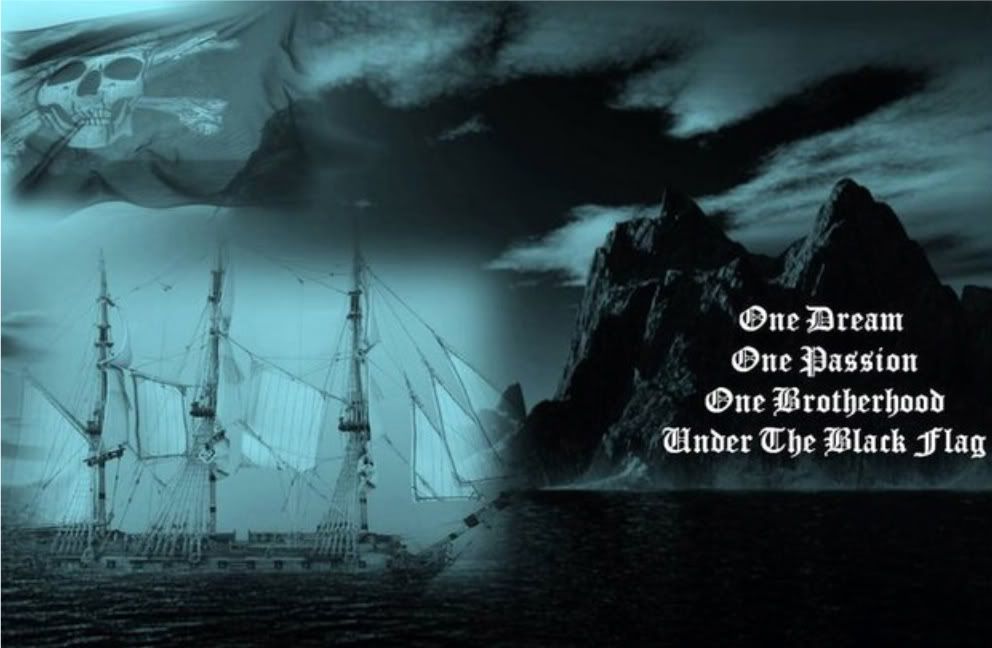Lady Mary Killigrew and Elizabeth Trewinnard, Lady Killigrew
1:31 μ.μ.
Mary was the daughter of a former Suffolk Arwenack Castle Cornwall Ireland
Elizabeth Cornwall
Elizabeth Trewinnard, Lady Killigrew
Elizabeth was also known as "Old Lady Killigrew".(b. before 1523- died after 1582), was an aristocratic Cornishwoman and an accused pirate during the reign of Queen Elizabeth I of England. She was the wifeof Sir John Killigrew of Arwennack, Cornwall.She and her husband received and stored stolen goods at their home, ArwennackHouse. In 1582, she was arrested and sentenced to death after she sent herservants to seize the cargo aboard a ship anchored in Falmouth harbour. Queen Elizabeth eventuallypardoned her, and she was released from prison.
| |
Elizabeth was born on an unknown date in St. Erith, Cornwall,the second eldest daughter of James Trewinnard (1490- 1523), of St. Erith, andPhilippa Carminow (died 9 August 1563).
She married Sir John Killigrew (died 1567) of Arwennack, bywhom she had a total of ten children:
Sir John Killigrew MP (died 5 March 1584 ), married Mary Wolverston (1540- before1671), by whom he had issue.
Peter Killigrew, married Ellen Higgins
Thomas Killigrew
Sir Henry Killigrew, married firstly Katherine Cooke, bywhom he had issue; married secondly, Jael de Peigne, by whom he had issue.
Sir William Killigrew, married Margery Saunders, by whom hehad issue
Jane Killigrew, married John Michell
Anne or Amy Killigrew
Grace Killigrew, married John Tretherffe
Alice Killigrew, married Richard Bonython
Margaret Killigrew, married Sir Francis Godolphin MP, Governor of the Scilly Isles,by whom she had issue.
In the 1540s, PendennisCastle was built for King Henry VIII on Sir John's lands and thelatter became the first hereditary captain of the castle which meant hecontrolled all of the shipping in the Falmouth Elizabeth
Historian Neville Williams described Elizabeth
Her husband died in 1567.
In 1582, Elizabeth Falmouth Elizabeth Elizabeth
One of her many descendants, Elizabeth Killigrew, became a mistress of King Charles II of England, to whom she bore adaughter in 1650. Other notable descendants were dramatist ThomasKilligrew, poet SidneyGodolphin, and Sidney Godolphin, 1st Earl ofGodolphin.
Mary was the daughter of a former Suffolk Arwenack Castle Cornwall Ireland
Elizabeth Cornwall
Elizabeth Trewinnard, Lady Killigrew
Elizabeth was also known as "Old Lady Killigrew".(b. before 1523- died after 1582), was an aristocratic Cornishwoman and an accused pirate during the reign of Queen Elizabeth I of England. She was the wifeof Sir John Killigrew of Arwennack, Cornwall.She and her husband received and stored stolen goods at their home, ArwennackHouse. In 1582, she was arrested and sentenced to death after she sent herservants to seize the cargo aboard a ship anchored in Falmouth harbour. Queen Elizabeth eventuallypardoned her, and she was released from prison.
| |
Elizabeth was born on an unknown date in St. Erith, Cornwall,the second eldest daughter of James Trewinnard (1490- 1523), of St. Erith, andPhilippa Carminow (died 9 August 1563).
She married Sir John Killigrew (died 1567) of Arwennack, bywhom she had a total of ten children:
Sir John Killigrew MP (died 5 March 1584 ), married Mary Wolverston (1540- before1671), by whom he had issue.
Peter Killigrew, married Ellen Higgins
Thomas Killigrew
Sir Henry Killigrew, married firstly Katherine Cooke, bywhom he had issue; married secondly, Jael de Peigne, by whom he had issue.
Sir William Killigrew, married Margery Saunders, by whom hehad issue
Jane Killigrew, married John Michell
Anne or Amy Killigrew
Grace Killigrew, married John Tretherffe
Alice Killigrew, married Richard Bonython
Margaret Killigrew, married Sir Francis Godolphin MP, Governor of the Scilly Isles,by whom she had issue.
In the 1540s, PendennisCastle was built for King Henry VIII on Sir John's lands and thelatter became the first hereditary captain of the castle which meant hecontrolled all of the shipping in the Falmouth Elizabeth
Historian Neville Williams described Elizabeth
Her husband died in 1567.
In 1582, Elizabeth Falmouth Elizabeth Elizabeth
One of her many descendants, Elizabeth Killigrew, became a mistress of King Charles II of England, to whom she bore adaughter in 1650. Other notable descendants were dramatist ThomasKilligrew, poet SidneyGodolphin, and Sidney Godolphin, 1st Earl ofGodolphin.
Mary was the daughter of a former Suffolk Arwenack Castle Cornwall Ireland
Elizabeth Cornwall
Elizabeth Trewinnard, Lady Killigrew
Elizabeth was also known as "Old Lady Killigrew".(b. before 1523- died after 1582), was an aristocratic Cornishwoman and an accused pirate during the reign of Queen Elizabeth I of England. She was the wifeof Sir John Killigrew of Arwennack, Cornwall.She and her husband received and stored stolen goods at their home, ArwennackHouse. In 1582, she was arrested and sentenced to death after she sent herservants to seize the cargo aboard a ship anchored in Falmouth harbour. Queen Elizabeth eventuallypardoned her, and she was released from prison.
| |
Elizabeth was born on an unknown date in St. Erith, Cornwall,the second eldest daughter of James Trewinnard (1490- 1523), of St. Erith, andPhilippa Carminow (died 9 August 1563).
She married Sir John Killigrew (died 1567) of Arwennack, bywhom she had a total of ten children:
Sir John Killigrew MP (died 5 March 1584 ), married Mary Wolverston (1540- before1671), by whom he had issue.
Peter Killigrew, married Ellen Higgins
Thomas Killigrew
Sir Henry Killigrew, married firstly Katherine Cooke, bywhom he had issue; married secondly, Jael de Peigne, by whom he had issue.
Sir William Killigrew, married Margery Saunders, by whom hehad issue
Jane Killigrew, married John Michell
Anne or Amy Killigrew
Grace Killigrew, married John Tretherffe
Alice Killigrew, married Richard Bonython
Margaret Killigrew, married Sir Francis Godolphin MP, Governor of the Scilly Isles,by whom she had issue.
In the 1540s, PendennisCastle was built for King Henry VIII on Sir John's lands and thelatter became the first hereditary captain of the castle which meant hecontrolled all of the shipping in the Falmouth Elizabeth
Historian Neville Williams described Elizabeth
Her husband died in 1567.
In 1582, Elizabeth Falmouth Elizabeth Elizabeth
One of her many descendants, Elizabeth Killigrew, became a mistress of King Charles II of England, to whom she bore adaughter in 1650. Other notable descendants were dramatist ThomasKilligrew, poet SidneyGodolphin, and Sidney Godolphin, 1st Earl ofGodolphin.
Mary was the daughter of a former Suffolk Arwenack Castle Cornwall Ireland
Elizabeth Cornwall
Mary was the daughter of a former Elizabeth Trewinnard, Lady Killigrew
Elizabeth was also known as "Old Lady Killigrew".(b. before 1523- died after 1582), was an aristocratic Cornishwoman and an accused pirate during the reign of Queen Elizabeth I of England. She was the wifeof Sir John Killigrew of Arwennack, Cornwall.She and her husband received and stored stolen goods at their home, ArwennackHouse. In 1582, she was arrested and sentenced to death after she sent herservants to seize the cargo aboard a ship anchored in Falmouth harbour. Queen Elizabeth eventuallypardoned her, and she was released from prison.
| |
Elizabeth was born on an unknown date in St. Erith, Cornwall,the second eldest daughter of James Trewinnard (1490- 1523), of St. Erith, andPhilippa Carminow (died 9 August 1563).
She married Sir John Killigrew (died 1567) of Arwennack, bywhom she had a total of ten children:
Sir John Killigrew MP (died 5 March 1584 ), married Mary Wolverston (1540- before1671), by whom he had issue.
Peter Killigrew, married Ellen Higgins
Thomas Killigrew
Sir Henry Killigrew, married firstly Katherine Cooke, bywhom he had issue; married secondly, Jael de Peigne, by whom he had issue.
Sir William Killigrew, married Margery Saunders, by whom hehad issue
Jane Killigrew, married John Michell
Anne or Amy Killigrew
Grace Killigrew, married John Tretherffe
Alice Killigrew, married Richard Bonython
Margaret Killigrew, married Sir Francis Godolphin MP, Governor of the Scilly Isles,by whom she had issue.
In the 1540s, PendennisCastle was built for King Henry VIII on Sir John's lands and thelatter became the first hereditary captain of the castle which meant hecontrolled all of the shipping in the Falmouth Elizabeth
Historian Neville Williams described Elizabeth
Her husband died in 1567.
In 1582, Elizabeth Falmouth Elizabeth Elizabeth
One of her many descendants, Elizabeth Killigrew, became a mistress of King Charles II of England, to whom she bore adaughter in 1650. Other notable descendants were dramatist ThomasKilligrew, poet SidneyGodolphin, and Sidney Godolphin, 1st Earl ofGodolphin.
Elizabeth Trewinnard, Lady Killigrew
Elizabeth was also known as "Old Lady Killigrew".(b. before 1523- died after 1582), was an aristocratic Cornishwoman and an accused pirate during the reign of Queen Elizabeth I of England. She was the wifeof Sir John Killigrew of Arwennack, Cornwall.She and her husband received and stored stolen goods at their home, ArwennackHouse. In 1582, she was arrested and sentenced to death after she sent herservants to seize the cargo aboard a ship anchored in Falmouth harbour. Queen Elizabeth eventuallypardoned her, and she was released from prison.
| |
Elizabeth was born on an unknown date in St. Erith, Cornwall,the second eldest daughter of James Trewinnard (1490- 1523), of St. Erith, andPhilippa Carminow (died 9 August 1563).
She married Sir John Killigrew (died 1567) of Arwennack, bywhom she had a total of ten children:
Sir John Killigrew MP (died 5 March 1584 ), married Mary Wolverston (1540- before1671), by whom he had issue.
Peter Killigrew, married Ellen Higgins
Thomas Killigrew
Sir Henry Killigrew, married firstly Katherine Cooke, bywhom he had issue; married secondly, Jael de Peigne, by whom he had issue.
Sir William Killigrew, married Margery Saunders, by whom hehad issue
Jane Killigrew, married John Michell
Anne or Amy Killigrew
Grace Killigrew, married John Tretherffe
Alice Killigrew, married Richard Bonython
Margaret Killigrew, married Sir Francis Godolphin MP, Governor of the Scilly Isles,by whom she had issue.
In the 1540s, PendennisCastle was built for King Henry VIII on Sir John's lands and thelatter became the first hereditary captain of the castle which meant hecontrolled all of the shipping in the Falmouth Elizabeth
Historian Neville Williams described Elizabeth
Her husband died in 1567.
In 1582, Elizabeth Falmouth Elizabeth Elizabeth
One of her many descendants, Elizabeth Killigrew, became a mistress of King Charles II of England, to whom she bore adaughter in 1650. Other notable descendants were dramatist ThomasKilligrew, poet SidneyGodolphin, and Sidney Godolphin, 1st Earl ofGodolphin.













